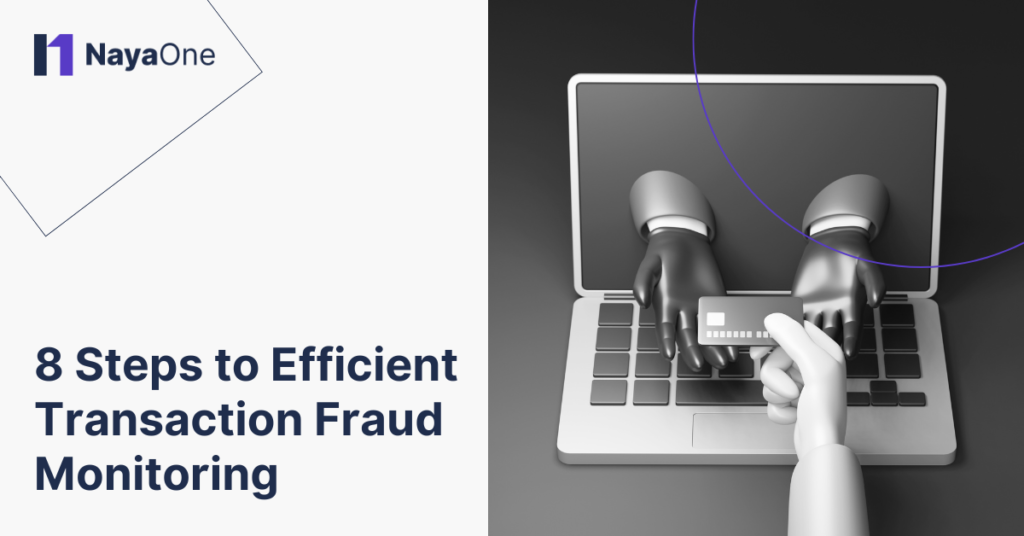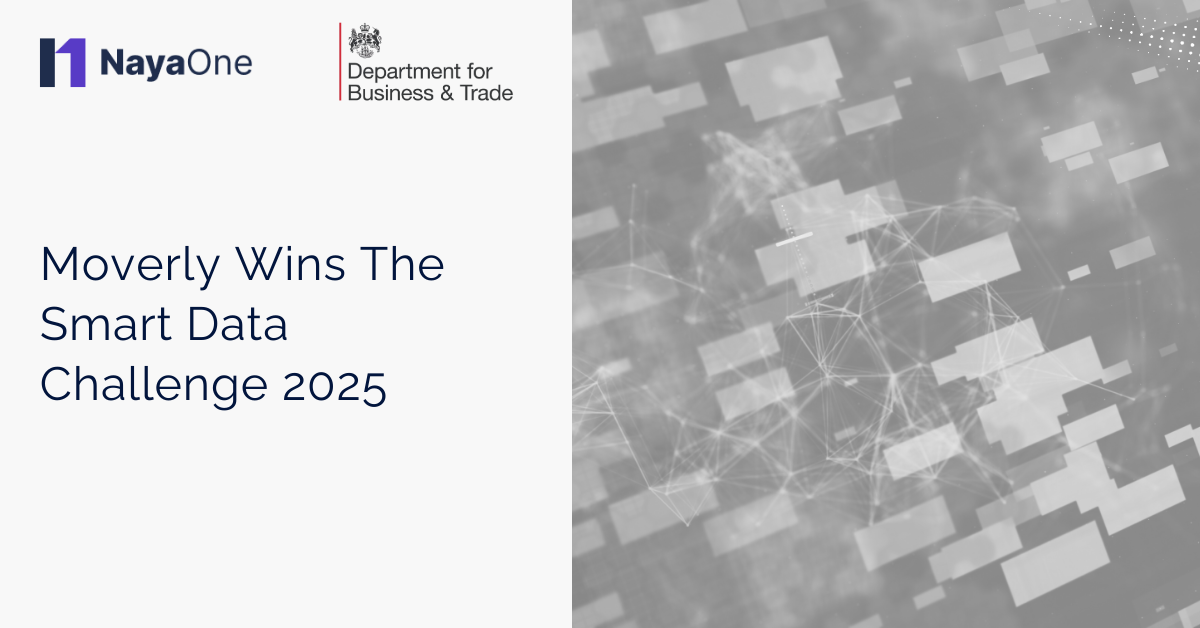
Oli Platt
Head of Client Solutions
As financial transactions continue to increase in volume and complexity, so do the risks associated with fraudulent behaviour.
The projected global cost of online payment fraud is anticipated to rise to $206 billion by 2025, surpassing the $130 billion recorded in 2020.
In response to the growing threats, organisations worldwide are adopting new measures to protect both businesses and consumers. The Bank of England, for instance, is experimenting with a potential digital pound and Proofs-of-Concept (PoC) to assess its technical feasibility and implications.
An experiment throughout 2023 and 2024 focused on using existing point-of-sale (POS) hardware in the UK to initiate digital pound payments. It explored both online and offline payment functionalities, indicating technical feasibility but potential need for modifications for offline payments.
In addition to such initiatives, financial organisations need robust fraud monitoring mechanisms to protect modern financial systems against fraudulent activities.
Let’s explore the importance of transaction fraud monitoring in ensuring the integrity and security of financial systems, various strategies, best practices, and technologies that organisations can leverage to enhance their fraud monitoring capabilities.
Understanding Transaction Fraud Monitoring
Transaction fraud monitoring is the process of identifying, analysing, and preventing fraudulent activities within financial transactions. It involves the continuous surveillance of transactions to detect irregularities, anomalies, or patterns indicative of fraudulent behaviour.
Transaction fraud monitoring plays a critical role in safeguarding financial institutions and businesses from various forms of fraud, including:
-
Credit and debit card fraud
-
Identity theft
-
Friendly fraud
-
Account takeover
-
Phishing
-
Payment fraud
-
Money laundering
By promptly identifying fraudulent activities, organisations can mitigate financial losses, protect their reputation, and maintain trust with customers and stakeholders.
Efficient transaction monitoring is also essential for ensuring the integrity of financial systems and complying with regulatory requirements.
Regulatory bodies impose strict standards on financial institutions and businesses to implement robust fraud detection and prevention measures. Compliance with these standards not only helps avoid costly fines and penalties but also contributes to a more secure and transparent financial environment.
Step-by-Step Guide to Efficient Transaction Fraud Monitoring
1. Leveraging Advanced Technology
Advanced technologies such as artificial intelligence (AI) and machine learning have revolutionised transaction monitoring. They offer unprecedented capabilities to detect and prevent fraudulent activities.
AI and machine learning algorithms have enabled financial institutions and businesses to analyse vast amounts of transactional data with unparalleled speed and accuracy. They can identify intricate patterns, anomalies, and trends that traditional monitoring systems may overlook.
Benefits of AI-Driven Solutions
-
Automated Task Monitoring: AI-driven solutions automate repetitive monitoring tasks. They allow organisations to operate at scale and free up human resources to focus on more strategic initiatives. By automating routine processes, AI accelerates the pace of transaction monitoring and enables organisations to respond swiftly to emerging threats.
-
Reduced False Positives: False positives are when legitimate transactions are incorrectly flagged as fraudulent. They have long been a challenge in transaction monitoring. AI algorithms can significantly reduce false positives by analysing data more comprehensively and accurately distinguishing between normal and suspicious activities. This reduction in false alerts minimises the burden on compliance teams and improves operational efficiency.
-
Enhanced Accuracy: AI-powered solutions continuously learn from historical data and adapt to evolving fraud patterns. They can identify subtle deviations from normal behaviour and proactively detect emerging fraud schemes.
2. Implementing Robust Customer Due Diligence (CDD)
Effective customer due diligence (CDD) processes are fundamental to gathering essential customer information and evaluating risk levels accurately. They are critical for businesses to maintain regulatory compliance and detect potential fraudulent activities effectively.
Robust CDD processes serve as the first line of defence against financial crimes. They provide businesses with comprehensive insights into their customers’ identities, behaviours, and associated risks.
By collecting and verifying accurate customer information, organisations can establish a solid foundation for risk assessment and tailor their monitoring efforts accordingly.
Best Practices for Conducting Thorough KYC Checks
-
Comprehensive Data Collection: Conduct thorough Know Your Customer (KYC) checks to gather essential information such as identity, address, occupation, source of funds, and beneficial ownership details. This information enables businesses to verify the legitimacy of customer identities and assess the associated risk factors.
-
Identity Verification: Utilise robust identity verification methods, including document authentication, biometric verification, and digital identity solutions, to ensure the accuracy and authenticity of customer identities. Multi-factor authentication measures add an extra layer of security and reduce the risk of identity fraud.
-
Risk Assessment: Evaluate the risk profiles of customers based on various risk factors. These include their industry, geographical location, transaction history, and association with politically exposed persons (PEPs) or high-risk jurisdictions. Assign risk ratings to customers to prioritise monitoring efforts and allocate resources effectively.
Ongoing Monitoring to Identify Suspicious Activities
-
Continuous Transaction Monitoring: Implement automated systems for continuous transaction monitoring to detect unusual or suspicious activities in real-time. Set up alerts for transactions that deviate from normal behaviour patterns, such as large or unusual transactions, high-frequency transactions, or transactions involving high-risk jurisdictions.
-
Behavioural Analysis: Leverage behavioural analytics tools to analyse customer transaction patterns and detect anomalies indicative of fraudulent activities. By monitoring changes in transaction behaviour over time, organisations can identify potential red flags and take prompt action to mitigate risks.
-
Enhanced Due Diligence (EDD): Conduct enhanced due diligence on high-risk customers or transactions that pose elevated money laundering or terrorist financing risks. EDD measures may include additional documentation checks, deeper background investigations, and closer scrutiny of transactional activities.
3. Adopting a Risk-Based Approach
Adopting a risk-based approach to transaction monitoring is crucial for organisations to effectively tailor their compliance efforts and efficiently allocate resources.
This approach prioritises monitoring activities based on the level of risk posed by customers, transactions, and other relevant factors. Thus, it allows businesses to focus their efforts on areas of greatest concern.
The risk-based approach to transaction monitoring involves assessing and categorising customers and transactions according to their inherent risk levels. By understanding the potential risks that come with different customer profiles, product offerings, and geographical locations, organisations can customise their monitoring strategies to target high-risk areas more effectively.
Benefits of the Risk-Based Approach
-
Targeted Monitoring: By focusing monitoring efforts on high-risk customers and transactions, organisations can prioritise resources where they are most needed. This allows businesses to identify suspicious activities more efficiently and allocate investigative resources appropriately.
-
Cost Efficiency: Adopting a risk-based approach helps organisations optimise their compliance expenditures by directing resources toward areas of greatest concern. By minimising unnecessary monitoring of low-risk activities, businesses can reduce operational costs while maintaining effective compliance measures.
-
Regulatory Compliance: Regulators increasingly endorse the risk-based approach as a best practice for anti-money laundering (AML) compliance. As a result, organisations can demonstrate their commitment to effective risk management and regulatory compliance.
Strategies for Implementation
-
Customer Risk Categorisation: Develop risk profiles for customers based on factors such as their industry, geographical location, transaction history, and relationship with politically exposed persons (PEPs). Classify customers into different risk categories, such as low, medium, and high risk, to guide monitoring and due diligence efforts.
-
Transaction Risk Assessment: Evaluate the risk associated with individual transactions based on factors such as transaction amount, frequency, destination, and counterparties involved. Implement thresholds and rules to flag transactions that exceed predefined risk parameters and require further investigation.
-
Resource Allocation: Allocate compliance resources proportionally to the level of risk posed by customers and transactions. Focus investigative efforts on high-risk activities that have the greatest potential for financial crime, while maintaining appropriate oversight of lower-risk transactions to ensure comprehensive coverage.
4. Developing Comprehensive Transaction Profiles
Developing comprehensive transaction profiles is essential for organisations to effectively detect and respond to suspicious activities. They provide a detailed understanding of typical transaction patterns and enable businesses to identify deviations that may indicate fraudulent behaviour.
Here are key considerations for developing robust transaction profiles:
Understanding Transaction Patterns
-
Payment Characteristics: Analyse typical payment amounts, frequencies, and methods used by customers. Understanding the normal transaction behaviour of different customer segments allows organisations to identify anomalies more effectively.
-
Transaction Channels: Consider the various channels through which transactions occur, such as online banking, wire transfers, or mobile payments. Each channel may have unique characteristics that influence transaction patterns and risk levels.
Identifying Red Flags
-
Unusual Transaction Activity: Look for transactions that significantly deviate from established patterns. These may be unexpected spikes in transaction volume or frequency. These anomalies may indicate potential fraudulent activity and warrant further investigation.
-
High-Risk Indicators: Pay attention to transactions involving high-risk countries, politically exposed persons (PEPs), or individuals/entities on sanctions lists. These transactions may pose elevated risks of money laundering or other illicit activities.
Documenting Transaction Profiles
-
Documentation: Document the parameters and criteria used to define transaction profiles, including payment limits, frequency thresholds, and risk indicators. Clear documentation ensures consistency in monitoring practices and facilitates compliance audits.
-
Record-Keeping: Maintain detailed records of transaction profiles and any updates or modifications made over time. Keeping accurate records allows organisations to track changes in transaction behaviour and assess the effectiveness of their monitoring efforts.
Testing and Validation
-
Quality Assurance: Periodically test transaction profiles to ensure they accurately capture typical transaction behaviour and effectively identify anomalies. Conducting quality assurance tests helps identify any weaknesses or gaps in the monitoring system.
-
Validation: Validate transaction profiles by comparing flagged transactions against known instances of fraud or suspicious activity. This helps refine monitoring criteria and improve detection capabilities.
Continuous Improvement
-
Feedback Mechanisms: Establish feedback mechanisms to gather input from compliance personnel, fraud analysts, and other stakeholders involved. This allows organisations to identify areas for improvement and refine transaction profiles accordingly.
-
Adaptation to Emerging Risks: Monitor industry trends, regulatory changes, and emerging fraud tactics to ensure transaction profiles remain effective in detecting evolving threats. Regularly review and update transaction profiles to address new risks and enhance detection capabilities.
5. Reviewing and Optimising Monitoring Rules
Fraudsters continuously evolve their tactics, and regulatory requirements often change. Regular review ensures that monitoring rules remain aligned with emerging fraud trends and regulatory expectations.
In addition, monitoring rules may become outdated or overly restrictive over time. This can lead to an increase in false positives or missed detections. Regular review allows organisations to fine-tune rules for optimal efficiency and effectiveness.
Strategies for Optimisation
-
Data-Driven Analysis: Utilise data analytics to identify patterns and trends in transaction data. Analysing historical transaction data can reveal insights into fraud patterns and help inform adjustments to monitoring rules.
-
Collaborative Approach: Involve cross-functional teams, including compliance, fraud detection, and technology experts, in the review process. Collaboration ensures that diverse perspectives are considered, leading to more comprehensive and effective monitoring rules.
-
Stay Informed: Monitor regulatory updates and guidance from relevant authorities to remain up-to-date with changes in compliance requirements. Regulatory changes may require adjustments to monitoring rules to ensure continued compliance.
-
Flexibility in Rule Design: Design monitoring rules with flexibility to accommodate regulatory changes without requiring extensive reconfiguration. Modular rule structures and configurable parameters allow for easier adaptation to evolving regulatory requirements.
Incorporating Machine Learning
-
Dynamic Rule Adjustments: Leverage machine learning algorithms to continuously analyse transaction data and adapt monitoring rules in real-time. Machine learning can identify emerging fraud patterns and automatically adjust monitoring rules to address new threats.
-
Predictive Analytics: Use predictive analytics to anticipate future fraud trends based on historical data and proactively adjust monitoring rules accordingly. Predictive models can help organisations stay ahead of fraudsters by identifying potential risks before they materialise.
Continuous Monitoring and Feedback
-
Continuous Evaluation: Establish processes for ongoing monitoring and evaluation of monitoring rules' performance. Regularly assess key metrics such as detection rates, false positive rates, and investigation efficiency to identify areas for improvement.
-
Feedback Mechanisms: Encourage feedback from frontline staff, including compliance analysts and fraud investigators, on the effectiveness of monitoring rules. Incorporate feedback into the optimisation process to address operational challenges and enhance rule efficacy.
6. Ensuring Proper Documentation and Record-Keeping
Maintaining comprehensive documentation and records of monitoring activities is essential for regulatory compliance and effective fraud investigations. Here’s why:
-
Legal Compliance: Regulatory authorities require firms to maintain detailed records of transaction monitoring activities to demonstrate compliance with anti-money laundering (AML) and fraud prevention regulations. Comprehensive documentation ensures that organisations can provide evidence of their monitoring efforts in the event of regulatory inquiries or audits.
-
Risk Mitigation: Thorough documentation serves as a risk mitigation strategy by providing a clear audit trail of monitoring activities. In the event of suspicious transactions or fraudulent activities, detailed documentation can help organisations defend their actions and demonstrate diligence in detecting and preventing financial crimes.
-
Transparency and Accountability: Proper documentation provides visibility into monitoring processes and decision-making. Regulatory authorities expect firms to maintain accurate records to demonstrate adherence to regulatory requirements and industry standards.
-
Regulatory Reporting: Documentation of monitoring activities is essential for fulfilling regulatory reporting obligations. These include filing suspicious activity reports (SARs) with financial intelligence units (FIUs). Timely and accurate reporting relies on the availability of comprehensive records to support the identification and investigation of suspicious transactions.
-
Evidence Collection: Detailed documentation serves as valuable evidence during internal investigations and law enforcement inquiries into suspected financial crimes. Investigators rely on transaction records, monitoring alerts, and investigative notes to reconstruct the sequence of events and identify potential perpetrators.
-
Efficient Resolution: Well-maintained documentation streamlines the investigation process by providing investigators with relevant information and insights into flagged transactions. Access to comprehensive records expedites decision-making and enables timely responses to suspicious activities. This minimises the impact of fraud on organisations.
Best Practices for Documentation
-
Standardised Procedures: Establish standardised procedures for documenting monitoring activities. This includes the recording of alerts, investigations, and outcomes. Consistent documentation practices ensure uniformity and clarity across monitoring processes.
-
Electronic Record-Keeping: Leverage electronic systems and databases to store monitoring records securely and facilitate easy retrieval and access. Electronic record-keeping platforms offer scalability, searchability, and data integrity, enhancing the efficiency of documentation processes.
-
Retention Policies: Specifying the duration for which monitoring records should be retained based on regulatory requirements and organisational needs. Retention policies ensure compliance with data retention regulations and facilitate efficient record management.
-
Regular Audits: Conduct regular audits of documentation practices to assess compliance with internal policies and regulatory standards. Audits help identify gaps or deficiencies in documentation processes and provide opportunities for corrective action and continuous improvement.
7. Fostering a Culture of Risk Awareness
Employees who are aware of potential risks are better equipped to detect fraudulent activities at an early stage. By understanding the signs of fraud, employees can identify suspicious behaviour and take proactive measures to mitigate risks before they escalate.
A culture of risk awareness encourages employees to remain vigilant and proactive in their roles. Rather than viewing fraud detection as solely the responsibility of compliance or security teams, all employees become active participants in safeguarding the organisation against financial crimes.
Benefits of Training on Fraud Detection
-
Empowered Employees: Providing training on fraud detection techniques helps employees recognise and effectively respond to suspicious activities. Training sessions educate employees on common fraud schemes, red flags to watch for, and procedures for reporting suspicious behaviour.
-
Timely Reporting: This enhances the organisation's ability to respond swiftly to potential fraud incidents. Timely reporting enables appropriate action to be taken to investigate suspicious transactions, prevent losses, and protect the organisation's assets and reputation.
Strategies for Cultivating Risk Awareness
-
Training Programs: Cover topics such as common fraud schemes, regulatory requirements, and reporting procedures. Offer interactive workshops, online courses, and resources to educate employees at all levels of the organisation.
-
Clear Communication: Foster open communication channels for employees to report suspicious activities confidentially and without fear of retaliation. Establish clear reporting procedures and ensure that employees know how and where to report concerns or observations.
-
Lead by Example: Senior leadership should actively participate in training sessions, reinforce the importance of compliance, and promote a culture of transparency and accountability.
-
Recognition and Incentives: Recognise and reward employees who demonstrate exemplary vigilance in detecting and reporting fraudulent activities. Incentivise proactive behaviour by acknowledging contributions to fraud prevention efforts.
-
Feedback Mechanisms: Solicit feedback from employees on the effectiveness of training programs and reporting procedures. Use employee input to refine training content, enhance reporting channels, and address any gaps or challenges in the fraud detection process.
-
Regular Updates: Continuously learn about emerging fraud trends, regulatory changes, and best practices in fraud detection and prevention. Provide regular updates and refresher training to ensure that employees remain informed and equipped to identify evolving threats effectively.
8. Establishing Effective Governance
Governance serves as the backbone of transaction monitoring processes, providing structure, oversight, and accountability. It encompasses the policies, procedures, and controls that guide how transaction monitoring is conducted within an organisation.
Effective governance ensures that monitoring efforts align with regulatory requirements, industry best practices, and the organisation’s risk appetite.
Senior management plays a crucial role in establishing the framework for transaction monitoring governance. They are responsible for setting clear policies and procedures that govern monitoring activities, allocating resources, and defining roles and responsibilities within the organisation.
Senior management’s commitment to compliance and risk management sets the tone for the entire organisation and reinforces the importance of adhering to regulatory requirements.
Setting Policies
Policies form the foundation of transaction monitoring governance. They delineate the organisation’s method for monitoring transactions. This includes the criteria for identifying suspicious activity, escalation procedures, and reporting requirements.
Policies should be thorough, transparent, and uniform throughout the organization. This will guarantee that all employees grasp their roles and obligations in the monitoring process.
Monitoring Performance
Effective governance requires ongoing monitoring and evaluation of transaction monitoring processes. This involves regularly assessing the effectiveness of monitoring activities, reviewing key performance indicators (KPIs), and identifying areas for improvement.
By monitoring performance metrics such as alert volume, false positive rates, and response times, organisations can identify trends, measure the impact of changes, and make data-driven decisions to optimise monitoring efforts.
Ensuring Compliance
Compliance with regulatory requirements is a fundamental aspect of transaction monitoring governance. Organisations must continuously review changes in regulations, update their policies and procedures accordingly, and ensure that monitoring activities align with regulatory expectations.
Regular audits and assessments help verify compliance with regulatory requirements and identify any gaps or deficiencies that need to be addressed.
Ensure Efficient Transaction Monitoring with NayaOne
In financial services, seamless and efficient transaction monitoring is a must, and partnering with fintech vendors can help you enhance your internal processes. NayaOne enables financial institutions to access a diverse range of fintech solutions tailored to meet their specific monitoring needs.
By leveraging NayaOne’s Sandbox-as-a-Service platform organisations can gain access to a growing network of pre-vetted fintech vendors. The NayaOne Tech Marketplace has 350+ pre-vetted fintechs that financial institutions can discover, evaluate, and build Proofs-of-Concept of within 4-6 weeks.
NayaOne also provides a safe and disconnected AI sandbox environment and state of the art synthetic datasets, allowing organisations to build new solutions without sacrificing data safety or regulatory compliance.
In an increasingly complex financial landscape, NayaOne can be your strategic ally, helping you navigate the intricacies of transaction monitoring with confidence, ensuring the integrity and security of their financial operations.
Schedule a demo to see NayaOne’s platform in action.






